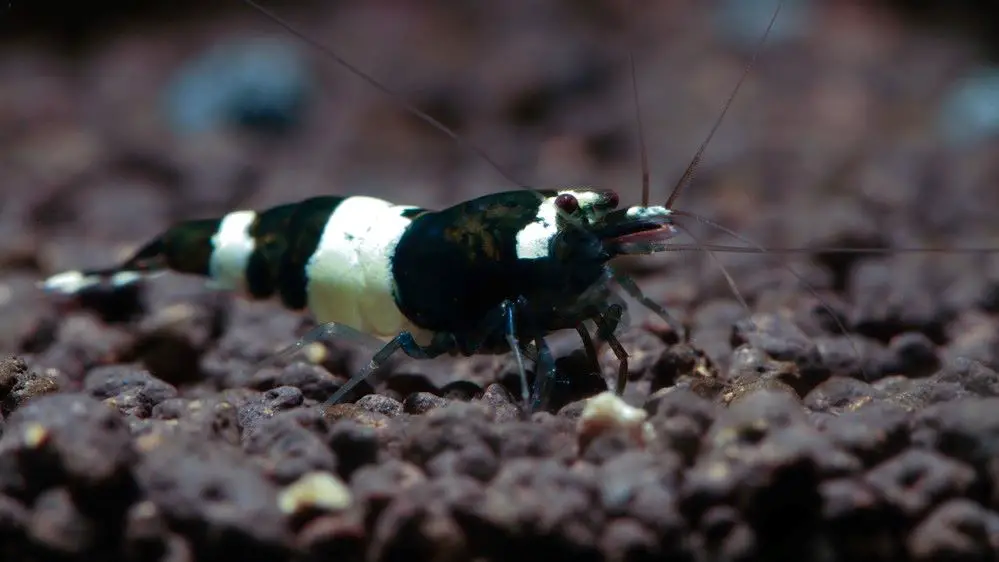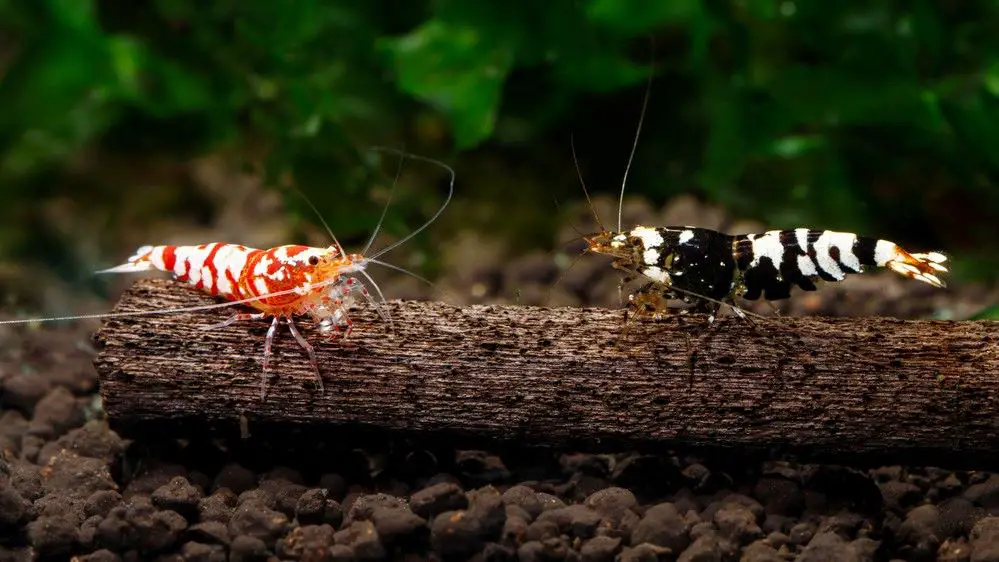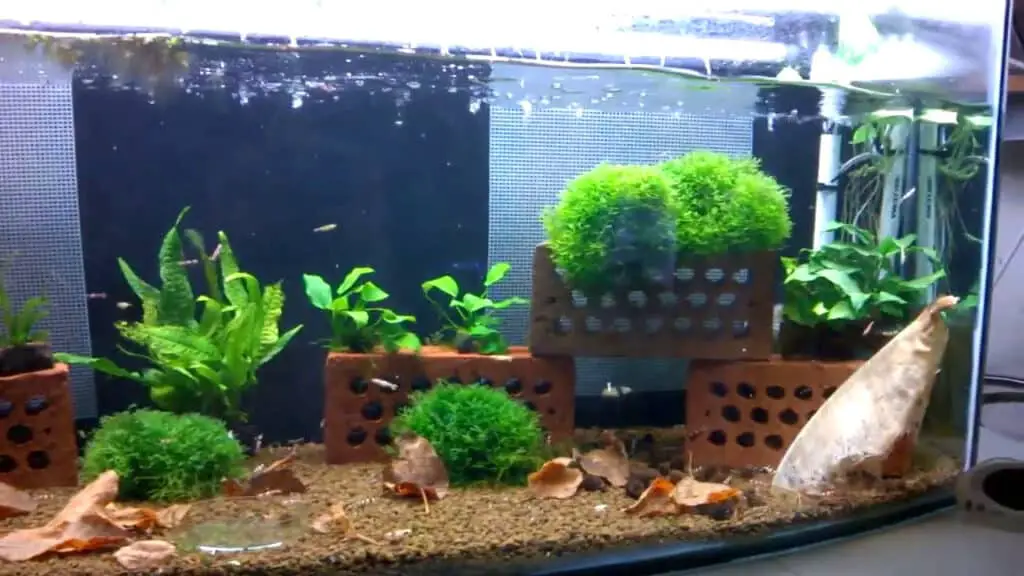An aquarium active soil, often used by dedicated shrimp enthusiasts, is a type of substrate that directly influences the water chemistry in your tank. It lowers the pH and hardness of the water, creating an ideal environment for certain species of shrimp and aquatic plants.
Hey there, fellow shrimp aficionado! I’m absolutely thrilled you’re here, ready to dive into the fascinating world of aquarium active soil. Over my 20 years of shrimp-keeping experience, I’ve come to appreciate the profound impact that the right type of soil can have on my little aquatic friends.
Remember the time I introduced Crystal Red Shrimps into my setup without adjusting the substrate? Yeah, let’s say it was less than successful.
The Magic Ingredient: Cation Exchange Capacity (CEC)
So, what is this magical factor in active soils that makes them so influential for our little shrimps? It’s called the cation exchange capacity (CEC). CEC measures a soil’s capability to hold and exchange positively charged ions or cations. These include key nutrients such as calcium, magnesium, and potassium – all of which are critical for aquatic life.
The Role of Active Soils
Active soils, like Akadama and Amazonia, are frequently used in aquariums due to their high CEC. This ensures the water pH levels are balanced, harmful substances like toxic heavy metals are removed, and the overall water quality is optimized for the thriving aquatic life.
Life Span of Active Soils: Regular Checks and Replacements
Remember, the CEC of active soils isn’t permanent. As time passes, the soil loses its cation exchange abilities, resulting in compromised water quality and increased pH levels. A drop in shrimp breeding can be a clear indicator of this. Pro breeders, therefore, usually change the soil every 12 months to uphold high CEC and maintain optimum water quality.

Choosing Your Active Soil: Beyond CEC
When picking soil for your aquarium, there’s more to consider than just CEC. For instance, soil texture and particle size matter too. Coarser soils with larger particles like Akadama facilitate better aeration and drainage, whereas finer soils with smaller particles like Amazonia hold more moisture and nutrients.
The Need for pH Checks and Adjustments
Lastly, do remember to regularly test your water’s pH levels and make the necessary adjustments. Most aquariums thrive in a pH range of 6.5 to 7.5, but certain species might have different requirements. So, always do your research on your tank’s specific needs to ensure a happy, healthy aquarium.
Conclusion: Write a section with an h2 header called conclusion and get straight to the point.at the end of the conclusion, finish by saying something like if you need any help, please don’t hesitate to contact me/reach out/ask and then say Happy Shrimp Keeping. ChatGPT
Thriving Shrimp Species on Active Soil
Active soils are not just any substrate; they’re a haven for certain shrimp species, creating the perfect environment for them to thrive. Let’s explore some species that absolutely love calling active soil their home.
Crystal Red Shrimp: These beautiful and somewhat delicate creatures do incredibly well on active soil. Crystal Red Shrimp prefer soft, slightly acidic water, a condition easily maintained with active soils like Amazonia. The soil helps keep the water parameters in check, promoting healthier living conditions and encouraging breeding.
Taiwan Bee Shrimp: Taiwan Bee Shrimp, known for their vibrant colors and patterns, thrive in conditions similar to Crystal Red Shrimp. These shrimp adore soft, acidic water, and active soil plays a crucial role in achieving these conditions. Taiwan Bee Shrimp breed more prolifically with proper water conditions, which makes active soil a great choice for any hobbyist hoping to raise a healthy colony.
Tangerine Tiger Shrimp: My personal success story with Tangerine Tiger Shrimp breeding by the thousands was largely due to Akadama active soil. These shrimps, though somewhat more adaptable than Crystal Reds or Taiwan Bees, greatly benefit from the stable water parameters that active soils provide.

Shrimp Species That Thrive on Inert Substrates
While some shrimp species revel in the benefits of active soils, others fare better with inert substrates such as sand. Let’s shed some light on these species that prefer the steadiness of inert substrates.
Neocaridina Shrimps: The popular Neocaridina species, which includes the Cherry Shrimp and Blue Dream Shrimp, prefer harder, more alkaline water conditions. These species do extremely well on inert substrates, which do not alter water chemistry. Inert substrates allow Neocaridina shrimps to thrive and breed profusely, making them a perfect choice for beginners and seasoned aquarists alike.
Sulawesi Shrimps: Sulawesi Shrimps are unique in their preference for high pH and harder water, which makes inert substrates a match made in heaven for them. The unique water conditions of their native Sulawesi lakes can be more accurately mimicked with inert substrates, as they keep the water stability these shrimp need to thrive.
A Word of Warning: Active Soils and Tap Water
Active soils, while beneficial for certain species, need to be handled with care. This is especially true when it comes to the type of water used in your aquarium. Tap water , a common go-to for many, might not be the best friend for your active soil, and here’s why:
, a common go-to for many, might not be the best friend for your active soil, and here’s why:
Tap water typically has a certain degree of carbonate hardness (KH), which influences the pH of the water. The whole point of using active soil is its ability to lower pH to levels as low as 5, creating ideal conditions for species like Crystal Red Shrimp or Taiwan Bee Shrimp.
However, when tap water (with its inherent KH) is introduced to an active soil environment, it counteracts the soil’s pH-lowering effect by raising the pH. In a battle of pH adjustments, your active soil gets exhausted faster as it works overtime to counteract the effects of the tap water.
The result? Your active soil’s lifespan is significantly shortened, and you may find yourself needing to replace it much sooner than the typical 1 to 1.5 years.
As a solution, it’s recommended to use Reverse Osmosis (RO) water with an active soil setup. RO water is devoid of KH, thus allowing your active soil to perform its pH-lowering magic without hindrance. To ensure your water still contains essential minerals, a remineralizer or buffer should be added to the RO water.
In the end, maintaining a successful and healthy aquarium requires striking a careful balance. Understanding how different elements interact, such as active soil and tap water, will help you create the best environment for your aquatic friends. And, as always, if in doubt, don’t hesitate to ask for help!
Conclusion
In a nutshell, active soils are the unsung heroes of aquariums, especially for those of us who share our world with shrimps. Their role in maintaining the water’s pH and quality is invaluable, all thanks to their cation exchange capacity (CEC). Remember, selecting the right active soil goes beyond its CEC value, considering factors such as texture and particle size.
Regular checks and replacements are crucial to ensure the longevity and health of your shrimp colony. And don’t forget those pH level checks – balance is key in this ecosystem we’ve created.
At the end of the day, we all want what’s best for our tiny, colorful companions. So if you need advice or have queries on your shrimp-keeping journey, don’t hesitate to reach out.
Happy Shrimp Keeping!

FAQ
Q. What is active substrate? A. Active substrate is a type of soil used in aquariums that has the capacity to influence the water parameters, such as pH and hardness. It can absorb and release certain elements, affecting the water chemistry and creating conditions suitable for specific aquatic life forms.
Q. What is the best aquarium active substrate? A. The “best” active substrate will depend on the type of aquatic life you’re hosting. For example, soils like Amazonia and Akadama are popular for shrimp and planted tanks due to their high CEC and pH-lowering properties.
Q. Is aquarium soil the same as normal soil? A. No, aquarium soil is not the same as regular garden soil. Aquarium soil is designed to maintain the appropriate water chemistry for aquatic life, while garden soil might contain nutrients or substances that could be harmful in an aquarium setting.
Q. What kind of soil do you use in an aquarium? A. For aquariums, particularly those housing shrimp or plants, active soils such as Akadama, Amazonia, or other commercially available aquarium soils are commonly used due to their high CEC and impact on water parameters.
Q. What is a substrate vs active site? A. A substrate in aquarium terms refers to the material at the bottom of the tank, like soil or gravel. In biochemistry, an active site refers to the region of an enzyme where substrate molecules bind and undergo a chemical reaction. These are two different terms used in different contexts.
Q. What is the difference between active and inert substrate? A. Active substrate can alter water parameters and has the ability to absorb and release nutrients. Inert substrate, on the other hand, does not interact with the water chemistry and serves mainly as a medium for plant roots or a surface for beneficial bacteria.
Q. What is a passive substrate? A. Passive substrate, like inert substrate, does not alter water chemistry. It’s mainly used to provide a surface for plant root growth and beneficial bacterial colonization.
Q. What are the three types of substrate? A. In the context of aquariums, substrates can be broadly classified as: 1) Inert or passive substrates like sand or gravel, 2) Active substrates like Amazonia soil, which alter water parameters, and 3) Nutrient-rich substrates specifically designed for planted tanks.
Q. How long does aquarium soil last? A. The lifespan of aquarium soil can vary depending on the type, but active soils usually maintain their beneficial properties for 1-2 years. Regular checks on water parameters can help identify when it’s time to replace the soil.
